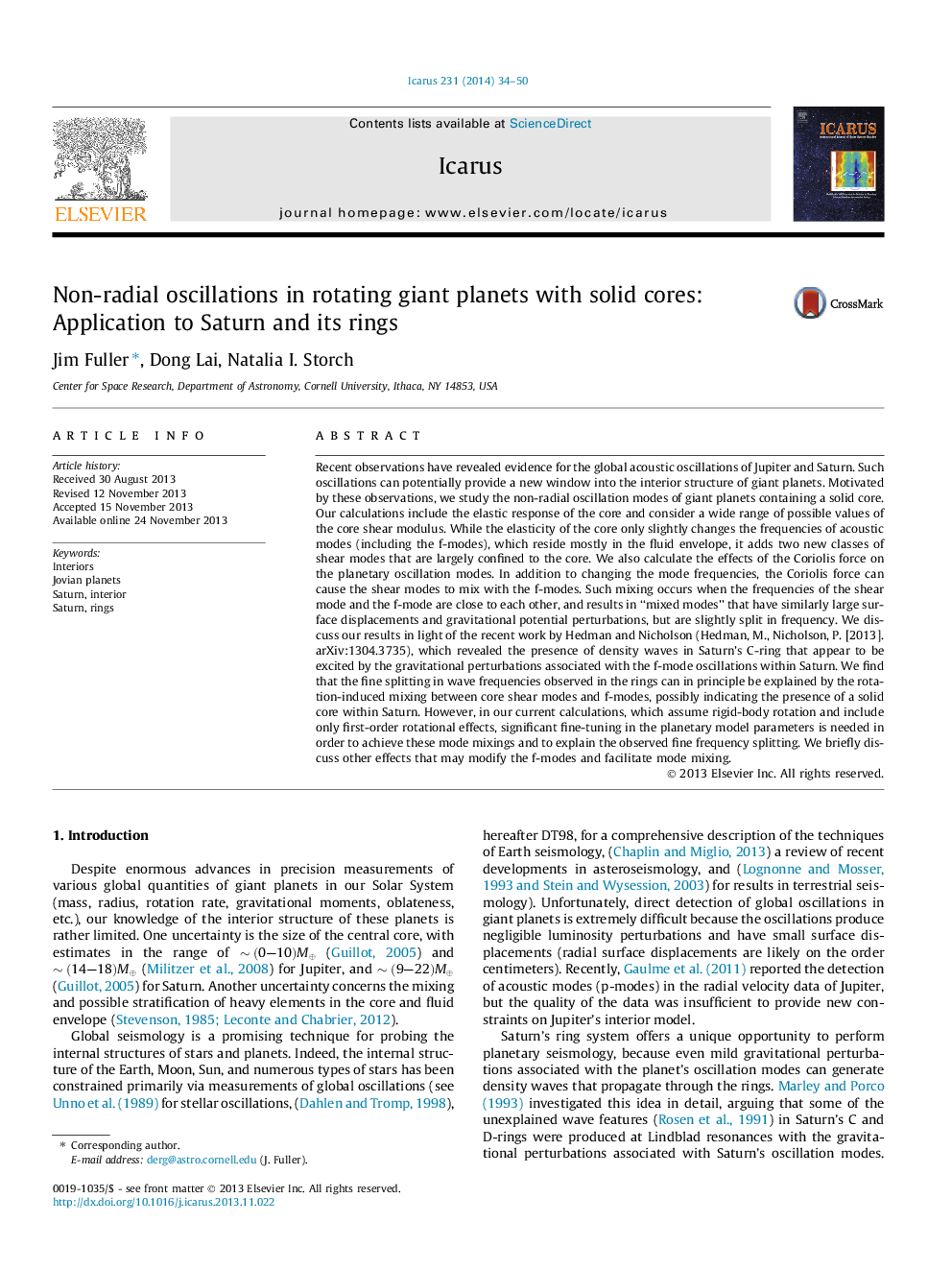| Article ID | Journal | Published Year | Pages | File Type |
|---|---|---|---|---|
| 8138559 | Icarus | 2014 | 17 Pages |
Abstract
Recent observations have revealed evidence for the global acoustic oscillations of Jupiter and Saturn. Such oscillations can potentially provide a new window into the interior structure of giant planets. Motivated by these observations, we study the non-radial oscillation modes of giant planets containing a solid core. Our calculations include the elastic response of the core and consider a wide range of possible values of the core shear modulus. While the elasticity of the core only slightly changes the frequencies of acoustic modes (including the f-modes), which reside mostly in the fluid envelope, it adds two new classes of shear modes that are largely confined to the core. We also calculate the effects of the Coriolis force on the planetary oscillation modes. In addition to changing the mode frequencies, the Coriolis force can cause the shear modes to mix with the f-modes. Such mixing occurs when the frequencies of the shear mode and the f-mode are close to each other, and results in “mixed modes” that have similarly large surface displacements and gravitational potential perturbations, but are slightly split in frequency. We discuss our results in light of the recent work by Hedman and Nicholson (Hedman, M., Nicholson, P. [2013]. arXiv:1304.3735), which revealed the presence of density waves in Saturn's C-ring that appear to be excited by the gravitational perturbations associated with the f-mode oscillations within Saturn. We find that the fine splitting in wave frequencies observed in the rings can in principle be explained by the rotation-induced mixing between core shear modes and f-modes, possibly indicating the presence of a solid core within Saturn. However, in our current calculations, which assume rigid-body rotation and include only first-order rotational effects, significant fine-tuning in the planetary model parameters is needed in order to achieve these mode mixings and to explain the observed fine frequency splitting. We briefly discuss other effects that may modify the f-modes and facilitate mode mixing.
Related Topics
Physical Sciences and Engineering
Earth and Planetary Sciences
Space and Planetary Science
Authors
Jim Fuller, Dong Lai, Natalia I. Storch,
